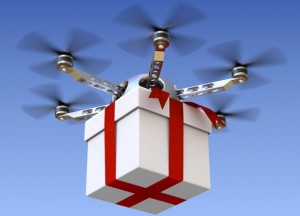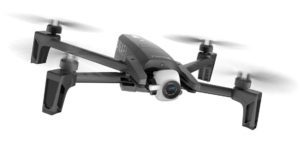 Still trying to think of that perfect present? Give what you’d most like to receive. Here’s a quick guide to help you choose the best drone for each person on your list.
Still trying to think of that perfect present? Give what you’d most like to receive. Here’s a quick guide to help you choose the best drone for each person on your list.
The following is a guest post by commercial drone pilot and writer Terry Jarrell.
Choosing the perfect gift for someone is hard enough, but when you are venturing in new territory it can become all the more complex. The world of consumer and prosumer drones is exploding with many different brands and models to choose from. It is important to have a little info about the capabilities of some popular models to help steer you in the right direction.
Who Are You Buying For?
This one is easy. You already know who you want to buy a drone for so that gives you a good starting point. As with other holiday gift situations, you may already be getting hints thrown at you – but use this info as a basis for shopping for the appropriate drone.
For example, if this will be a first drone for a child or teen you surely don’t want – or need – to be spending upwards of $1,000 for a model that will likely take a fair share of abuse while their flying skills develop. Even if the recipient is an adult, it is worth considering their skill level and intentions for pursuing drones as a hobby or eventually heading into professional areas.
If this is for an experienced drone operator who has been jonesing for an upgrade or replacement for their good ol’ faithful flyer, then you can rest a little more comfortably with a higher investment, since they already have some skill and experience to bring to the table.
Types of Drones to Consider
As you can see above, we are looking at several different types of new and experienced drone operators. Let’s begin with brand new users of all ages.

Obviously, there is going to be some wear-and-tear on their first drone. While there are plenty cheap models to be found online, many of them are designed as mere toys and lack some of the characteristics of more advanced models. If you determine that your gift will be for someone who will be doing more than buzzing around the house and wants to learn and get deeper into droning, and excellent choice is the Ryze Tello by DJI. Starting at around $100, it is relatively inexpensive, durable and easy to fly. A bonus for younger flyers is that the Tello has an available programming software tool that allows for a learning experience at the same time. There are many other alternatives found online, such as Amazon for even less money but keep in mind, you are venturing into ‘toy’ category at this point and further away from the more robust features if you think your budding drone pilot wants to advance later on.
For a moderately experienced flyer who may be stepping up from a basic or inexpensive drone there are some other great options. The DJI Spark is quite a powerhouse and the controller and flight characteristics are very similar to its bigger Mavic kin. Starting at $399 for the base kit, it isn’t such a huge impact on the budget.

Stepping up a bit for even more advanced operators is the Mavic line which includes the Mavic Air up through the Mavic 2 with an amazing Hasselblad camera. The Mavic Air sits right between the Spark and the Mavic Pro however it tops the Mavic Pro in terms of portability and it has some great autonomous functions. Starting at $799 for the basic kit you are getting up there in price, but also entering a more robust device which can even be used in many professional settings. Right alongside these is the impressive Autel Evo at $999 for the base kit which, despite being a fairly new entry, has developed a following of die hard fans due to the amazing camera and Autel’s excellent reputation of top notch customer support.. Similarly, the Anafi from Parrot offers easy flying and high quality 4K video, same as the Mavic line and the Autel Evo. The Anafi starts at only $699 which is a more comfortable price point for those wanting a good camera without all the bells and whistles.
Where to Buy
Typically, stores devoted to electronics or similar technology are safe bets to purchase from. Don’t forget about shopping online too and most manufacturers such as DJI and Autel offer sales directly from their online store. Buying from other online sources is fine but be sure you trust them and they are reputable. Unfortunately, tech devices are one of the most popular sales scams online so if in doubt about who you are buying from, look to a more solid seller.
Another buying tip: Don’t forget about refurbished models too. Some manufacturers offer factory certified refurbished models at steep discounts which can not only save you a ton, but also let you get more drone for your buck. Being refurbished by the manufacturer you typically get the same warranty coverage and you are assured it has passed their strict quality control guidelines.
One more tip: If the model you are looking for offers something like a ‘fly more combo’ or similar accessories kit, buy it! Most drones come pared down to just the basics to get you in the air with the drone itself, a controller and one battery. With flight times averaging from 15 – 30 minutes, your new drone pilot will surely be wanting more flight time and with batteries sometimes running well over $100, these kits are designed to save you money by packaging some more goodies that will be appreciated.
Lastly, don’t forget to…
…register with the FAA. Yes, even if they will only be flying around the backyard for fun, any drone that weight more than 0.55 lbs and up to 55 lbs. must be registered at https://faadronezone.faa.gov. They must also read, understand and adhere to the Special Rule for Model Aircraft that is presented on the FAA website. This is not just a suggestion or an optional step, it is a solid requirement. If someone is planning on flying for any business or commercial purpose at all, they must go the extra lengths to pass an airman’s knowledge test and acquire a 14 CFR part 107 Remote Pilot certificate.
 Terry Jarrell is owner of Black Dog Drone Operations in central Florida where he has been a technology professional, Apple consultant, instructor and writer for over 15 years. He is also a FAA CFR 14 Part 107 Remote Pilot dedicated to the advancement of professional, safe and productive drone operation through education and awareness
Terry Jarrell is owner of Black Dog Drone Operations in central Florida where he has been a technology professional, Apple consultant, instructor and writer for over 15 years. He is also a FAA CFR 14 Part 107 Remote Pilot dedicated to the advancement of professional, safe and productive drone operation through education and awareness







[…] Source link […]